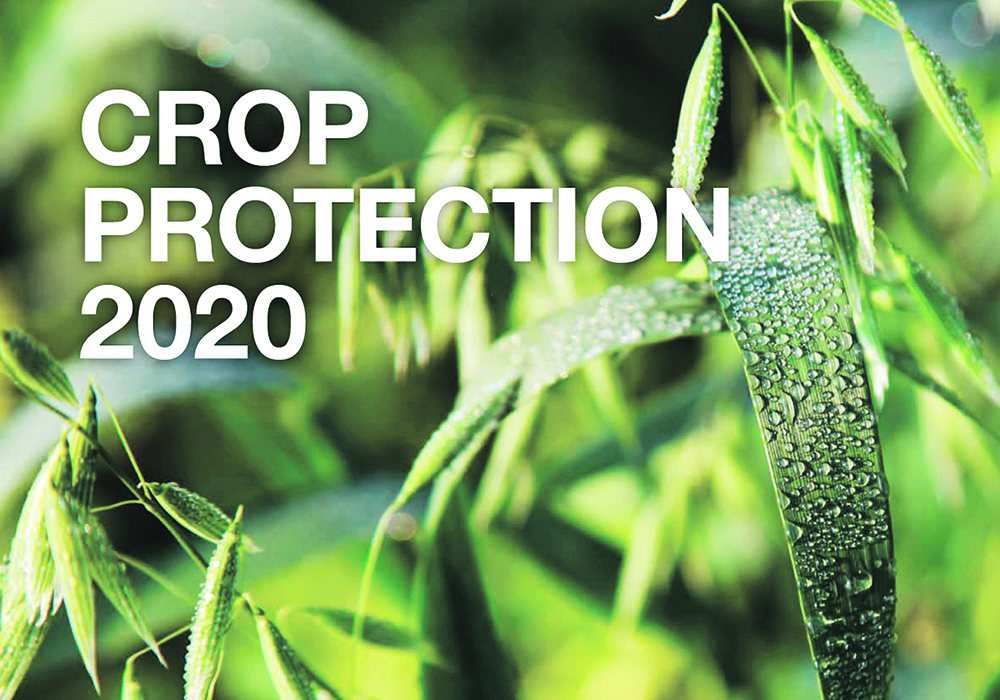A book that can be found in most Alberta farm shops and sprayers, commonly known as the Blue Book, will be produced by four Alberta commodity groups in the future rather than by the provincial government.
With the official title of the Alberta Crop Protection Guide, the book contains information on registered herbicides, fungicides and insecticides, modes of action, the weeds, fungi and insects they are intended to control, and other information on agricultural chemicals, mixing and application.
Alberta Barley, Alberta Canola, Alberta Pulse Growers and the Alberta Wheat Commission jointly took over the project after learning the provincial government planned to halt its involvement.
Read Also

Farming Smarter receives financial boost from Alberta government for potato research
Farming Smarter near Lethbridge got a boost to its research equipment, thanks to the Alberta government’s increase in funding for research associations.
“With all the reductions that have been going on with the government, one of their cuts was going to be the publishing and putting the Blue Book out, and our mantra as commissions, whether it’s barley, wheat, canola or pulse, is to provide value to our members and this is a really valuable tool,” said Alberta Barley chair Dave Bishop.
“We just didn’t want to see it disappear and so went into an agreement with the provincial government to take it over. All the commodities benefit from the Blue Book so we should all be participating in it and that’s what happened.”
There has always been a charge for the book and that will continue. Project costs to the commodity groups are expected to be minimal, said Bishop. Funding has come through the federal-provincial Canadian Agricultural Partnership.
“At the end of the day we’re going to try and make it so it’s cost neutral,” Bishop said.
The origins of the Blue Book lie in the 1970s. That’s when the federal Liberal government, led by Pierre Trudeau, embraced the metric system for Canada, according to former Alberta agriculture minister Marvin Moore.
The conversion wasn’t smooth because farm chemical companies, like all other sectors, were compelled to provide label information and application rates in metric.
Moore, who farmed near DeBolt, Alta., at the time, was among those confused with the new system.
“(In 1975) I was home on a weekend trying to spray some newly seeded crop with information on the label all in metric,” Moore recalled.
“We had been spraying for years in fluid ounces of chemical per acre with generally 40 pounds of pressure and always on an acre. How do you convert all of this, especially hectares to acres then fluid ounces to litres? And what is a kilopascal?”
The following Monday morning, Moore drove back to Edmonton and wasted no time explaining the problem to his deputy minister, Jim O’Donaghue.
“I suggested to him that we should take all the chemical companies’ info and convert it to acres and pounds of pressure and put it into a book for farmers to use,” said Moore.
The idea didn’t sit well with chemical companies, however. O’Donaghue reported that they were reluctant to flout the federal government’s metric mandate.
Moore responded that companies that did not want to supply the necessary information would simply be left out of the book.
“I said it will only take a few years and they will all be in and the federal government is not going to win the war of converting all farmers to metric.”
The next year, the book was published. Moore contends that the choice of blue for the cover was a reflection of a Progressive Conservative signature colour during the early Peter Lougheed years.
“We were still trying to replace some of the green Social Credit colour slogan with blaze orange or blue,” said Moore.
The 2021 version of the Blue Book is expected to be available in March, said Bishop, and will be similar in content with a few updates. It will be available in print and online, as in previous years.
“Most farmers use the Blue Book every year. There’s very few, I would say, who have never referenced it for something,” Bishop said.
In a news release announcing the commodity group plan, Alberta canola chair John Guelly agreed.
“Having the most current information on crop protection products is essential. It allows farmers to protect consumers, the environment and their crops. We are pleased to be working with the other crop commissions on this important project.”


















